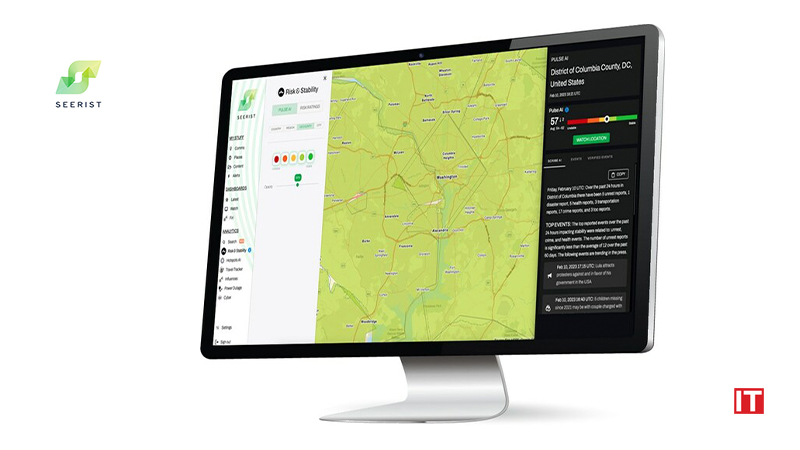Seerist Inc., the leading augmented analytics solution for threat and security professionals, announced it has launched county-level artificial intelligence (AI) risk assessments. This addition to the Seerist solution enables users to monitor stability and use it as a leading indicator of potential disruptions in counties across the United States.
By enabling organizations to monitor stability levels, organizations can make informed decisions based on accurate, real-time data and analysis on a wide range of risks, including natural disasters, crime, public health, and infrastructure vulnerabilities. The tool aggregates and analyzes data from a variety of sources, including government agencies, local news outlets, and social media, to provide the most comprehensive and up-to-date information available.
Also Read: ePlus Announces Cloud Hosted Services Powered by VMware Cloud on AWS
“This is the first county-by-county risk and stability assessment on the market, and we believe it can significantly help federal and state agencies, as well as corporations, understand the changing risk landscape across the country, further empowering them to assess when stability levels are changing and act before threat events become disruptive,” said John Goolgasian, chief product and innovation officer. “We believe that by utilizing AI and machine learning, we can help to make communities safer and more prepared for potential risks and emergencies. Our goal is to empower people with the information they need to make informed decisions.”
Calculated over 300,000 times a day, the Seerist county-level stability models organizations with headquarters or operations throughout the United States, to monitor and act on changing risk indicators to ensure the safety or their people, operations, and supply chains.
The Seerist Pulse Stability Model
Seerist Pulse continuously calculates stability levels by assessing activity and risk using both short- and long-term indicators. In the Seerist platform, analysts can visualize trends to understand the trajectory of events that are affecting stability in an area, see how the current situation relates to normal conditions and predict where things might go. This allows organizations to take preemptive actions.
SOURCE: PR Newswire
































